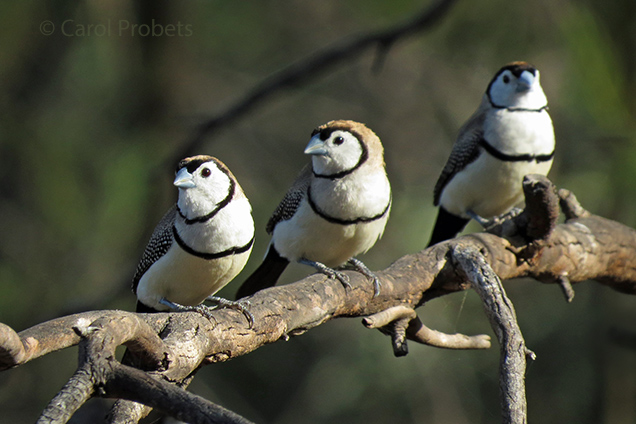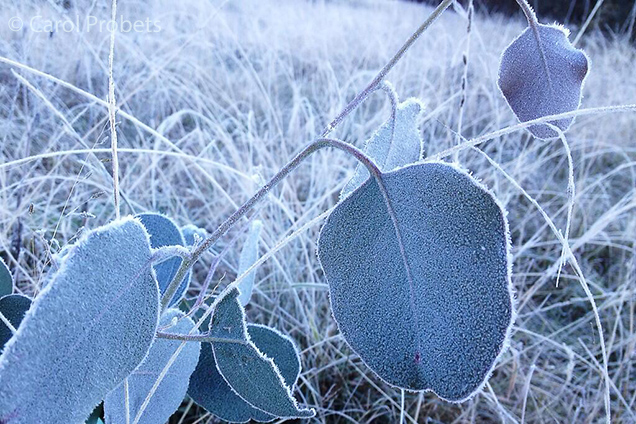The woodland was silent. Frost clung to earth and grass stems in every patch of shade not yet touched by the sun’s rays. My fingers felt like blocks of ice, only less useful; I was wishing I’d remembered to wear gloves. I shoved my hands in my coat pockets with my notebook, pen and phone. These three items, along with the binoculars around my neck, are the tools I use to carry out bird surveys (the phone mostly for its timer, as these surveys are strictly 20 minutes duration).
Ten minutes had passed and I had not yet recorded a single bird on the survey site. This was getting dispiriting. Then, a rush of tiny birds flew in and landed on the ground ahead. Yellow-rumped Thornbills. They were immediately joined by an even larger flock of Double-barred Finches and a pair of Speckled Warblers. A Scarlet Robin dropped to the ground from a low branch and picked up a grub, while the canopy above was alive with sound and movement: tiny Weebills, Striated Thornbills, Brown-headed Honeyeaters and Golden Whistlers. A Grey Fantail sallied in and out of the foliage acrobatically chasing flying insects. Suddenly, so much bird activity it was hard to know where to look. Fourteen species of small birds together — this was a cracker of a mixed feeding flock!

How do you count dozens of birds in a constantly moving group? And how do you count the number of each different species as they leapfrog each other along the ground and through the tree canopy? This was my happy challenge for the moment as I strove to complete the survey as accurately as possible. Tasks like this focus the mind; experience and skill are fully utilised. How I love being out on such mornings!
Mixed species flocks are a common feature of autumn and winter birding. When not bound by the constraints of nesting, small birds can take advantage of the benefits of group living. Foraging is more efficient in a mixed group, and there are more eyes to watch for predators.
My survey site was a patch of trees planted to provide habitat for endangered Regent Honeyeaters and other woodland species. Mixed flocks are thrilling, but even more so when they’re making use of trees planted by caring volunteers to help birds.






Hi Carol. The flocks of birds moving about in winter are amazing. Still waiting for the Scarlet Robin in the Illawarra in my usual spots although Rose Robin are about. Have been to Capertee once before a few back with Illawarra Birders and you as guide. Look forwatd to getting there again
LikeLike
Hi Andrew, it’s great to hear from you. I worry about Scarlet and Flame Robins as both are getting harder to find. Glad you enjoyed the Capertee Valley. It’s a terrific place at any time of year!
LikeLike